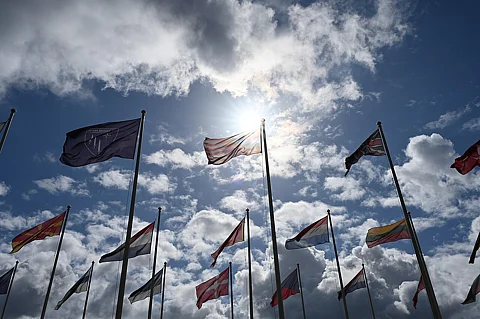

NATO allies are close to agreeing on a significant increase in defense spending, with broad support for raising the target to 5% of GDP, Secretary-General Mark Rutte said Thursday.
The proposal, which would mark a major shift from the alliance’s current 2% benchmark, is expected to be finalized at the NATO summit in The Hague later this month.
“There’s broad support,” Rutte told reporters after chairing a meeting of defense ministers in Brussels. “We are really close. I have total confidence that we will get there.”
Currently, only about two-thirds of NATO members meet the existing 2% spending target. Countries such as Portugal (1.55%), Italy (1.49%), Canada (1.37%), Belgium (1.3%), and Spain (1.28%) still fall short.
The push for higher defense budgets comes amid growing concerns over Russia’s military aggression and its ongoing war in Ukraine. At the same time, U.S. President Donald Trump has intensified pressure on NATO allies to increase spending, warning that Washington could scale back its strategic support for Europe if commitments are not met.
Last month, Germany agreed in principle to the U.S. demand for higher defense budgets, though it currently spends just under 2% of its GDP on the military. Rutte emphasized that priorities for additional spending include long-range weapons, air defense, and mobile land forces.
U.S. Defense Secretary Pete Hegseth expressed optimism that NATO members would soon agree to the 5% target.
“This alliance, we believe, in a matter of weeks, will be committing to five percent—3.5% in hard military and 1.5% in infrastructure and defense-related activities,” Hegseth said after meetings with NATO counterparts.
Spain has been the most vocal opponent of the proposed increase, with Defense Minister Margarita Robles stating that the current 2% target is sufficient. However, she confirmed that Madrid would not veto a decision to raise the spending goal.
“We think that this 2% is enough to meet the responsibilities we have committed to,” Robles said.
In a separate decision, NATO defense ministers approved a 30% increase in military capability targets—marking the first time since the Cold War that such requirements have been tied to concrete regional defense plans. The move is aimed at countering potential Russian aggression.
“We live in a different world, we live in a more dangerous world,” Rutte said, warning that without increased investment, NATO’s security could be at risk in the coming years.
The new targets, which remain classified, focus on bolstering air and missile defense, expanding land forces, and improving logistics. NATO members will need to submit detailed plans to meet the spending goals, with Rutte suggesting a 2032 deadline—though some Eastern European nations argue for a faster timeline.
Estonian Defense Minister Hanno Pevkur, for example, urged allies to reach 5% within five years, citing urgent threats from Russia.
The upcoming summit in The Hague is expected to be dominated by Trump’s demands, with allies working to avoid public clashes. Diplomats say European members recognize that higher defense spending may be necessary to ensure continued U.S. commitment to NATO.
Rutte dismissed suggestions that allies were tailoring their decisions to appease Trump. “We’re not doing it for an audience of one,” he said. “We’re doing it to keep one billion people safe.”
However, the final summit declaration is expected to be brief to minimize the risk of provoking the U.S. president.
As negotiations continue, NATO officials acknowledge the challenges ahead. “We’re at break-up point,” one anonymous official said, underscoring the delicate balance required to maintain alliance unity.